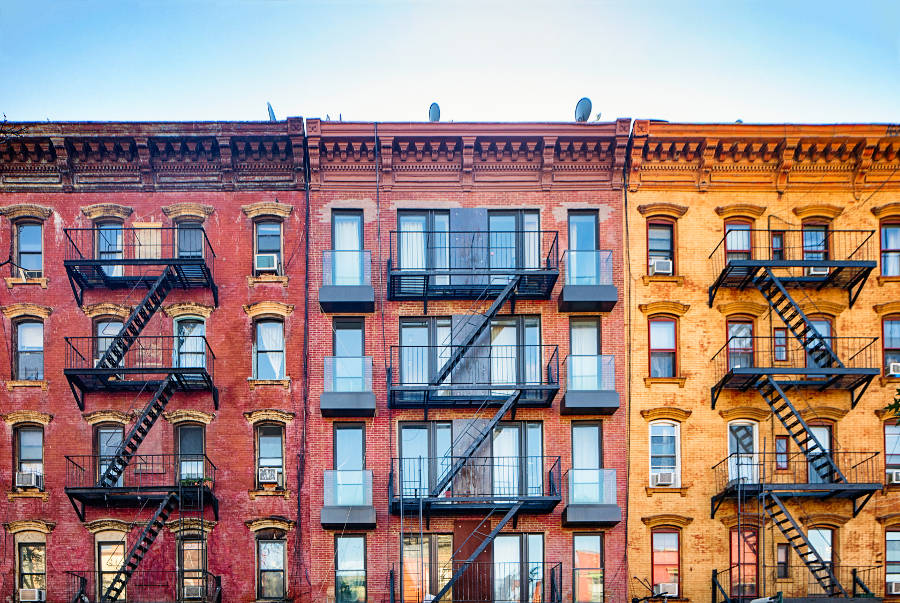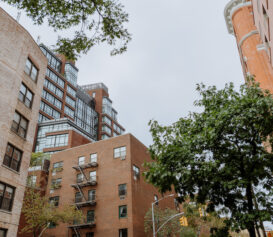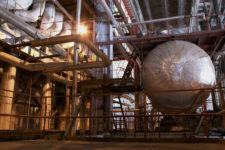During the March 26th City Council meeting, several new laws were approved that spell out big changes for facade regulations in NYC. Here’s what we know so far, and what’s still coming.
No More 5 Year FISP…?
One of the biggest bills yesterday had 26 sponsors, and could mean big changes for owners and managers when it comes to facade compliance.
Int 0394-A (2024) could fundamentally change the structure of required Local Law 11 facade inspections and the FISP program. The council has given the DOB permission to “eliminate the existing 5-year FISP cycle, [and] require [the] DOB to adopt new rules establishing a longer interval of time between FISP cycles, provided that such periodic intervals are between 6 to 12 years.”
Owners and managers would have longer periods of time in between FISP inspections, giving some relief to the current 5-year cycle.
To be clear – there are no details on if or how this would impact the current Cycle 10. We’ll have to wait for the DOB to provide any relevant updates there.
FISP For New Buildings
Additionally, FISP inspections for new buildings (the initial examination) would take place in the eighth year following the erection/installation of any exterior wall or appurtenance (as evidenced by the issuance date of a temporary or final CO, or as prescribed by rule). This is a change from the current requirement for initial examinations in the fifth year following said TCO/CO.
FISP Study
The law also mentions that the DOB shall conduct a study evaluating the frequency of FISP, and giving recommendations regarding the inspection schedule.
While the Department already announced a FISP Study with Thornton Tomasetti last year, what’s new is the timeframe. The council now expects recommendations to be delivered by December 31, 2025.
Facade Enforcement
Despite changes to “loosen” current FISP structure, the city council is doubling down on enforcement with INT 0661-A.
New penalties would be introduced for failure to complete repairs in a timely manner:
- Failing to submit completed construction documents to the DOB within 5 months
- Failing to file necessary permit applications within 8 months
- Failing to fully complete facade repairs within 2 years
All three of the above penalties carry a minimum $5,000 fine, with a maximum of $20,000.
There is an exception for sidewalk sheds connected to new building, enlargement, or demolition work. Additionally, the DOB commissioner may grant an extension of time to complete repairs upon request, and if necessary information and proof is provided.
Sidewalk Shed Requirements
INT 0391-2024 codifies some initiatives in Get Sheds Down driven by the Adams Administration:
- Complete a sidewalk shed study, and make recommendations to the council by September 30th this year
- Promulgate rules for using containment netting as an alternative
- Expand allowable color palette to include other options beyond hunter green
- Increase the size of lighting installed beneath sheds, and the minimum height
INT 660-2024 specifically “double[s] the required level of lighting under sidewalk sheds from 45 lumens per watt or greater to 90 lumens per watt or greater, and would require that lighting under sidewalk sheds be provided specifically by LED lights.” Specific rules are also outlined for sheds within a 20-foot radius of a window, glass door, or other fenestration of a dwelling unit.
More agency rules are required here, so updates to come.
Sidewalk Shed Permits & Enforcement
The final rule in the package approved today (INT 393-2024) relates to requirements & penalties for sidewalk sheds in the public right-of-way.
Here’s the summary of the final bill:
This bill would reduce the duration of sidewalk shed permits issued in connection with a façade repair from 1 year to 3 months. The duration of sidewalk shed permits connected to demolition, a building alteration, or new building construction would remain undisturbed.
This bill would also create new penalties enforceable by the Department of Buildings (“DOB”) for sidewalk sheds occupying the public right of way where a building owner has failed to conduct necessary façade repairs in a timely manner. Penalties would be enforced beginning with the second permit renewal, increasing based on the size and age of the shed.
Finally, reports accompanying an application for a sidewalk shed permit renewal would be required to include information on work performed during the period of time since the last renewal; if work has not been performed during that time, documentation illustrating the applicable reason for the lack of work may be accepted by DOB for the purpose of renewing the permit.
What Does This Mean For Your Buildings?
It’s possible that we may see changes implemented for FISP more quickly than we thought. The law regarding facade cycle changes is set to take effect on October 1, 2026.
While Cycle 10 of the FISP program has begun, and October 2026 falls around 5 months before the end of Cycle 10-A, anything is possible. We may see adjustments to filing dates as the Subcycle due dates near, or we may see changes put in place for the next round – Cycle 11.
For now, we recommend making sure your properties are compliant with Cycle 10 as it exists now. Make sure you know which properties are in Subcycles A, B, and C (here in your account), and that you connect with your QEWI to confirm next steps.
Additionally, it’s critical to stay on top of your sidewalk shed permits (here, in SiteCompli/InCheck). That said, we’ll keep you posted on ongoing changes, rules, and any news that comes from the Council and/or the DOB here.




